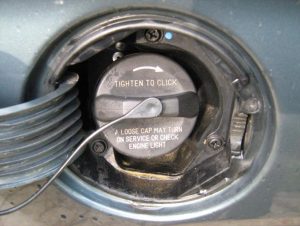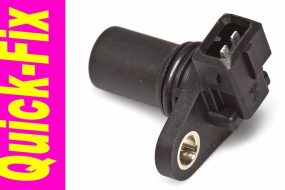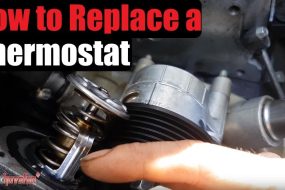
As a driver or car owner, having a vacuum leak can be frustrating because of the problems it will cause. These problems range from rough idle to poor acceleration, engine misfire, etc. It can make you uncomfortable and cause the driving to be less enjoyable.
Finding the cause of a vacuum leak may not be very easy considering how hidden some hoses can be in a vehicle. Some hoses may be blocked by an engine part that will need to be removed before accessing the hose. In this case, you have to remove the part to check the hose to be sure it is not the cause of the leak.
However, apart from a loose or damaged hose, a faulty gasket and seals can cause a vacuum leak in a car giving the same symptoms as the loose, disconnected, or damaged hose, but can a bad gas cap cause a vacuum leak?
Yes, a bad gas cap can cause a vacuum leak in your car. If the gas cap is faulty, damaged, missing, or not sealing correctly, it will allow air into the gas tank causing a disruption in the balance of pressure within the fuel system, thereby causing a vacuum leak.
Can a Bad Gas Cap Cause a Vacuum Leak?

Yes, a bad gas cap can cause a vacuum leak especially if the gas cap doesn’t seal tightly, is damaged, or is missing, it can cause air to enter into the gas tank affecting the balance of pressure in the fuel system, and causing a vacuum leak.
When you tighten the gas cap onto the fuel tank, it is supposed to create an airtight seal, making sure that no air enters the fuel tank and that no fuel vapors can escape into the environment, however, when the gas cap goes bad, it may not be able to seal the fuel tank as tightly as it can, thereby allowing air to enter into the tank, causing it to have a vacuum leak.
How to Fix a Vacuum Leak Caused by a Bad Gas Cap?
Here is how to fix a vacuum leak caused by a bad gas cap:
- To fix a vacuum leak caused by a bad gas cap, you need to purchase a replacement gas cap that is suitable or compatible with your car. You can make the purchase from an auto shop.
- After purchasing the gas cap, park your car in a safe and well-ventilated area. Turn the engine off and remove the key from the ignition.
- Now, remove the old gas cap from its position. This is pretty easy. Just do it the way you usually do when you’re about buying gas.
- Take the new gas cap and install it where the old one was removed. While this is done, ensure that it is properly tightened and sealed with a few clicks. You should hear a few clicks, indicating that it’s securely in place.
- Since a vacuum leak caused by a bad gas cap usually causes the check engine warning light to come on on the dashboard, you can reset it by either using an OBD-II scanner or driving your vehicle for a certain number of miles until the light resets on its own. You can also disconnect your battery to have it reset.
- Start your vehicle and listen for any hissing sounds around the gas cap area. If the gas cap was the source of the vacuum leak, this sound should be gone.
After doing these, the problem should be solved. Nevertheless, you should keep an eye on the check engine light, it shouldn’t come back once the issue is resolved.
Physical Signs of a Bad Gas Cap
Below are the physical problems on the gas cap that show it has gone bad:
- Check for Cracks on the Gas Cap: One of the best ways to know you have a bad gas cap is by inspecting the gas cap itself for cracks or any damage. If your gas cap mistakenly falls and ever since then, you started having a lean code or vacuum leak, it is obvious that the cap is cracked from the incident. It doesn’t matter how little the crack is, it should be replaced immediately.
- If the Gas Cap is not Sealing Tightly: If after buying gas, you notice that your gas cap is not sealing and making the sound it used to be, chances are that it may have gotten bad. The cause of this can be old age coupled with falling. A gas cap is designed to last long but not forever.
Symptoms of a Bad Gas Cap
Here are the symptoms of a bad gas cap:
1. Check Engine Warning Light on the Odometer
When your gas cap goes bad, the first sign you will get is the check engine light. The bad gas cap will trigger your car’s computer to register a leak in the evaporative emissions system, thereby causing the warning light to come on.
Most times, when a gas cap is not properly tightened after buying gas, it will trigger your car’s computer to register a leak in the evaporative emissions system, causing the check engine light to come on on your dashboard. In this case, removing and tightening the gas cap properly will solve this problem.
2. It Will Reduce Your Gas Mileage
A loose or damaged gas cap can allow gasoline vapors to escape from the fuel tank. As a result, your vehicle’s gas mileage will decrease, causing you to spend more money on gas.
3. Fuel Odor Around Your Car
A faulty gas cap can lead to the escape of gasoline vapors which can produce a noticeable fuel odor around your vehicle. If you detect the smell of gasoline when you’re near your car, it’s a sign that your gas cap may not be sealing properly.
4. It Can Lead to a Failed Emissions Test
A leaking or damaged gas cap can cause your vehicle to fail an emissions test. To pass these tests, your vehicle’s evaporative emissions system must be in good working order, including the gas cap. If they are not, it may cause you to fail the test.
Conclusion
A gas cap is designed to capture and store gasoline vapors from the fuel tank and prevent them from escaping into the atmosphere. When the gas cap is functioning as it should, it will maintain the system’s functionality, preventing air from entering the fuel tank and ensuring that fuel vapors are properly managed.
However, when the gas cap is bad, it will fail to prevent the entry of air into the gas tank thereby causing a vacuum leak. So, yes, a bad gas cap can cause a vacuum leak. It is the first thing to check when you have a vacuum leak issue.
Meanwhile, it is also worth noting that a loose gas cap that is not properly tightened can cause a vacuum leak. Therefore, remove the gas cap and tighten it back to be sure it’s securely tightened to avoid having the check engine light on your dashboard.









